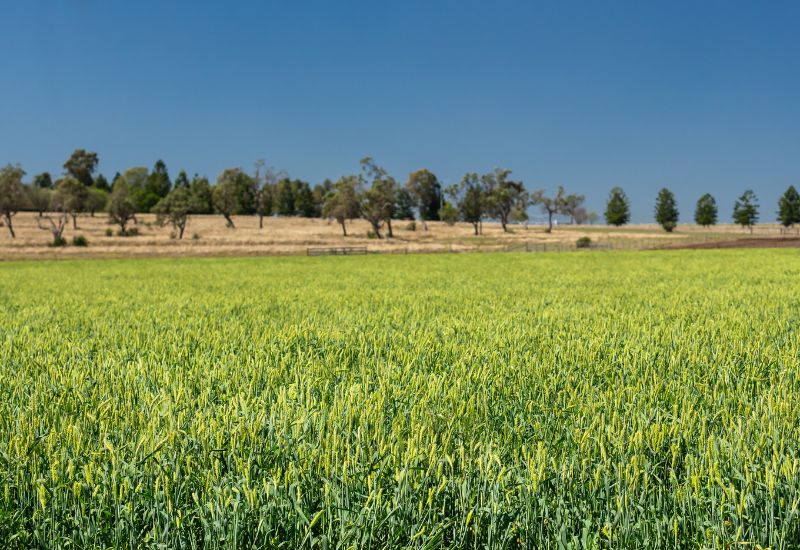
Hay is a staple in Australian agriculture, supporting livestock nutrition across the country. However, not all hay is the same, and each type serves different purposes based on the animals being fed, the region, and the nutritional requirements. Here’s a breakdown of the most common types of hay in Australia, helping you choose the right one for your needs.
Lucerne (commonly known as alfalfa outside Australia) is one of the most popular types of hay due to its high protein and calcium content. It’s ideal for dairy cattle, horses, and growing animals that need extra nutrients for development or milk production. First-cut and dryland lucerne crops may be of poorer quality, with weaker leaf attachment, thicker and longer stem length. They can also be slightly dirtier due to winter weed issues, and broadleaf weeds are more difficult to control. These factors may make early cut lucerne less suitable for situations where livestock is being hand-fed. Cured in the right conditions, second and subsequent cuts can be of higher quality.
Oaten hay is a versatile option widely used across Australia and is favoured for its palatability and moderate nutritional profile.
Wheaten hay, similar to oaten hay, is best if cut early in its maturity. While it’s less sweet than oaten hay, it provides similar energy levels and is often more economical.
Barley hay can be an excellent option for livestock due to its good balance of energy and fibre.
Grass hay refers to a variety of native and improved pasture grasses that are cut, dried, and baled. Common species include ryegrass, kikuyu, and fescue.
Clover hay, often mixed with grass or other hays, is prized for its high protein and calcium content. It’s commonly used as a supplement rather than a standalone feed.
Rhodes grass is a tropical perennial grass common in northern Australia. It’s an economical option with good fibre content, suitable for general livestock feeding.
Pasture hay is a mixture of grasses and legumes. Its composition can vary widely, depending on the plant species and the time of harvest.
Northern pasture hay has more grass types with a small amount of clover and larger amounts of Rhodes grass or lucerne. Southern pasture hay is usually softer in texture and a higher percentage of clovers. Due to the variability across a single paddock and between locations, it’s important to check feed test results taken from the lot meet nutritional requirements.
When selecting hay, consider the following:
Understanding the differences between hay types, as well as understanding the feed test results allows you to make informed decisions for your livestock. Lower quality hay can often align with poorer livestock performance. Whether you’re feeding dairy cows, sheep, or horses, there’s a hay variety to suit every need. Choose wisely, and your animals will thrive, contributing to a healthier, more productive farm.
Search our marketplace